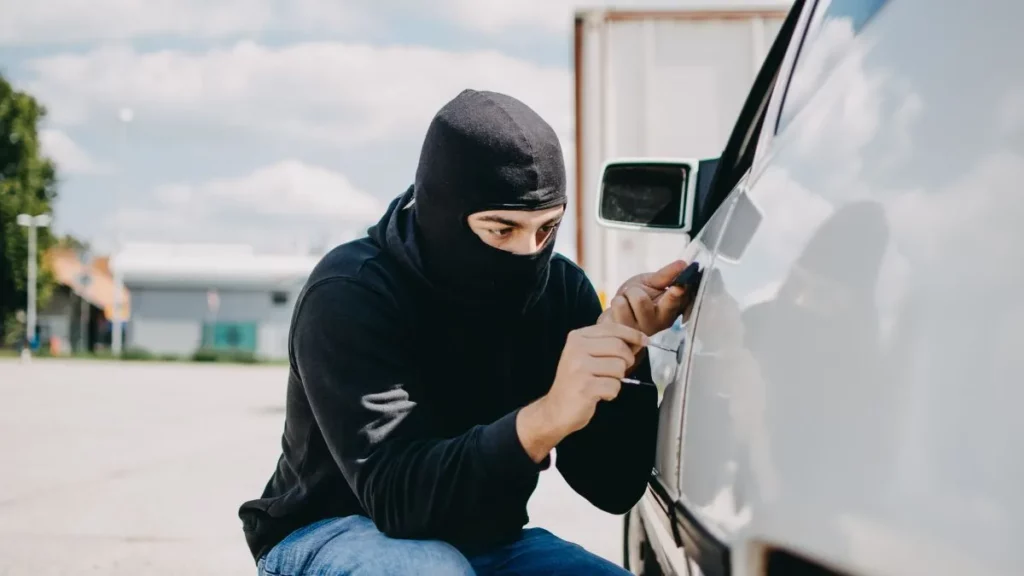A disturbing tendency in auto theft culture has emerged with the rise of the Kia Boys, and it is affecting Hyundai and Kia vehicles in particular. Not only is theft a defining feature of this phenomenon, but it also has strong cultural roots in things like music, TikTok, and unique joyride films.
Contents
The Kia Boys’ Cultural Impact:
Music videos featuring stolen Kia and Hyundai vehicles have gone viral, with millions of views and listens on sites like YouTube and Spotify. The cultural influence is greatly enhanced by TikTok, where users post joyride movies set to catchy music that showcase daring car thefts. A disturbing convergence of car theft, social media, and racial and economic inequality in low-income areas is the correlation between higher view counts and flashier cars, especially Hyundais and Kias.
The Design Flaw:
The 2011–2021 Kia and the 2015–2021 Hyundai models are both affected by a serious design defect that is at the heart of this trend. One small knob under the ignition cylinder is the source of the problem; after breaking into the car, a USB-A plug can start the ignition. Theft has increased due to this vulnerability, and Hyundai and Kia have settled for $200 million to address the epidemic of theft.
The Kia Boys: A Decentralized Movement
The Kia Boys are a loosely knit gang of juvenile auto thieves (between the ages of 12 and 15), as opposed to the more centralized car theft networks. In this context, “Kia Boys” refers to any adolescent who steals Hyundais and Kias for fun drives. In the world of vehicle theft, the Kia Boys represent a distinct subculture that is devoid of official hierarchy and money.
Consequences and Community Impact:
Beyond joyrides and cultural impact, the Kia Boys’ activities have far-reaching consequences. Problems arise for Hyundai and Kia shops as flooded service facilities have to deal with an inflow of stolen cars. When dealing with insurance problems and lengthy repair schedules, car owners encounter annoyance and aggravation. The harmful effects of this tendency have been brought to light by tragic events, such as the deaths of young Kia Boys in car accidents.
Blame and Responses:
Many people—including parents, automobile manufacturers, TikTok, and car thieves—are holding the Kia Boys responsible for their trend. Although such conduct is not tolerated on TikTok, the platform has complex standards regarding content control. It is clear from legal activities, such as class action lawsuits and the reactions of local authorities, how difficult it is to hold culpable parties to account.
Societal Context and Future Outlook:
Subcultures like the Kia Boys came into being as a result of broader social factors, most notably economic and racial segregation. The uprising against low status and institutional institutions is highlighted by sociologists’ insights. Theft of automobiles is an urgent concern, but there has to be a long-term solution that deals with systemic issues as well.
Conclusion:
The Kia Boys craze is just a surface-level indicator of systemic problems that need systemic solutions. Cops, lawmakers, and attorneys have their work cut out for them trying to root out the Kia Boys trend while also dealing with a dispersed gang of vehicle thieves. To put an end to this troubling trend in car theft culture once and for all, a comprehensive approach is required.
FAQs
What is the Kia Boys phenomenon?
Thefts of Kia and Hyundai vehicles have recently become more common, giving rise to a disturbing trend in the car theft culture known as the Kia Boys phenomenon. Not only does it revolve around stealing, but it is also marked by cultural aspects like music, TikTok, and unique joyride videos.
How do cultural elements contribute to the Kia Boys trend?
Songs that celebrate the act of stealing Hyundai and Kia vehicles have become popular on platforms such as YouTube and Spotify. TikTok’s joyride movies, which feature daring car thefts set to mellow music, have a greater cultural impact. More views are attributable to flashier vehicles, especially Hyundais and Kias.
What is the crucial design flaw in Kias and Hyundais mentioned in the article?
This defect affects Hyundais produced between 2015 and 2021 and Kias produced between 2011 and 2021 that have a little knob located under the ignition cylinder. Due to this vulnerability, a USB-A plug can be used to start the ignition after gaining access to the car, which has resulted in an increase in thefts.
How has Hyundai and Kia responded to the surge in thefts?
A $200 million settlement was reached between Hyundai and Kia in reaction to the extensive theft pandemic. The settlement seeks to fix the security vulnerabilities in the affected automobiles and resolves the critical design defect.
Who are the Kia Boys, and how do they differ from traditional car theft rings?
A loose confederation of youths, the Kia Boys usually range in age from twelve to fifteen, who steal automobiles. They don’t have a clear hierarchy or capital like other auto theft organizations. In this context, “Kia Boys” refers to any adolescent who steals Hyundais and Kias for fun drives.
What are the consequences and community impacts of the Kia Boys’ activities?
Dealerships for Kia and Hyundai, who had service garages inundated, will feel the effects long after joyrides and cultural effects have faded. Inconvenience, insurance problems, extended repair waits, and aggravation are some of the problems that car owners encounter. The harmful effects of this tendency have been brought to light by tragic events, such as the deaths of young Kia Boys in car accidents.











